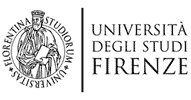Where we are
Seen from above, Firenze appears to be a magical town.
The monuments rise up majestically from behind the splendour of their facades; the pattern of the roofs reveals the direction of hidden alleyways; the hills surround the city harmoniously. Colours range from pink to terracotta, from the grey of stones to the green of olives and cypresses.
Firenze has a wide history, involving art, banking, religion, culture and politics. Its origins date back to the 1st century B.C. when it was a Roman colony. In medieval time it broke away relatively early from feudalism: at the beginning of the 13th century it was already a proud and blossoming free “Comune”.
The development of art and culture, of the social and political sphere, culminated in the rule of the Medici which conferred splendour on the city for over three centuries.
The extraordinary expansion of Florentine trade throughout Europe first brought wealth and power to the Medici. The city grew remarkably in this period. It was at its most creative between the 13th and 16th centuries and the glory of that period is still evident today.
From 1865 to 1871 Firenze was the capital of the Kingdom of Italy.
Today, Firenze not only has a glorious past but is also an important centre for arts and crafts, commerce and industry. All of these activities attract tourists from many different backgrounds and with many different interests.


